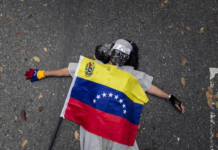Abstract:
-
Venezuela sees a 14% dip in oil exports due to reduced production of exportable crude and PDVSA’s struggle to replenish stocks.
-
Investigation into rampant corruption within PDVSA uncovers billions in unpaid cargoes, leading to arrests and an overhaul of management.
-
Despite lower figures than previous months, PDVSA’s exports in May remain higher than early 2023’s numbers due to contract suspension.
-
The nation’s heavy crude stocks see a decline, with a noticeable drop in lighter domestic crudes used for diluting extra heavy output.
-
Chevron Corp, with U.S. authorization, continues to boost exports of Venezuelan crude.
-
The oil-rich nation also increases its deliveries to political ally, Cuba.
-
An Iranian condensate cargo awaits discharge in Venezuelan waters.
Venezuela, once a proud beacon of South America’s oil industry, now grapples with a significant 14% drop in oil exports in May, emblematic of a sinking ship unable to right itself. The culprit? The dilapidated state of its heavy crude upgraders and the beleaguered state-run oil firm PDVSA, struggling under the weight of corruption, mismanagement, and a stark inability to replenish inventories.
PDVSA, a symbol of the nation’s once-thriving oil industry, now finds itself in the throes of a broad anti-corruption probe. A damming expose revealing billions of dollars in unpaid cargoes, leading to the temporary suspension of contracts, and a subsequent management overhaul, the company is a far cry from its former glory. The damning evidence led to more than 60 people arrested, a shocking testament to the depth of the rot.
Yet, against all odds, PDVSA and its joint ventures managed to ship an average of 606,258 barrels per day (bpd) of crude and refined products in May. A figure below the prior two months, but a silver lining remains – it is higher than the first two months of the year when the contract suspension brought some exports to a grinding halt.
On the international front, U.S.-based oil giant Chevron Corp (CVX.N), armed with a U.S. authorization from November, has ramped up its exports of Venezuelan crude. A testament to this is the 149,000 bpd shipped in May to the United States and a storage terminal in the Bahamas, showing a steady increase from April’s 141,000 bpd.
In an apparent show of solidarity, PDVSA has also upped the ante in its deliveries of crude and fuel to its political ally, Cuba. Deliveries surged to 58,100 bpd in May from April’s 45,250 bpd, marking a significant increase in support to its island neighbor. This show of camaraderie amidst a crisis is a noteworthy move in the country’s foreign relations.
Despite these efforts, the stocks of Venezuela’s flagship Merey 16 heavy crude witnessed a steep fall from 1.89 million barrels to 1.2 million barrels by the end of May. The inventories of lighter domestic crudes, vital for diluting the Orinoco Belt’s extra heavy output, also saw a significant 44% decline to 930,000 barrels during the same period.
Venezuela’s oil industry faces a litany of challenges, but it’s not all doom and gloom. The nation holds almost 20% of the world’s proven crude oil reserves, and the potential to solve global oil supply problems is vast. Amidst the chaos, what Venezuela needs isa renaissance, a resurrection from the ashes of corruption and mismanagement to reclaim its rightful place as a leading oil producer and exporter.
However, the road to recovery is fraught with obstacles. The nation is in the throes of a humanitarian crisis, with millions of Venezuelans food insecure and fleeing the country in search of better opportunities. Hyperinflation continues to ravage the economy, with one of the highest rates globally. The nation is considered high-risk, ranking last out of 153 nations in GlobalData’s Country Risk Index.
The current state of affairs in Venezuela is a poignant reminder of the dire consequences of corruption, mismanagement, and authoritarian rule. It’s a call to action for the global community to support this beleaguered nation on its path to recovery. The country’s potential is enormous, but it requires systemic change, accountability, and transparent governance.
Moreover, the Venezuelan government needs to address the rampant violence, corruption, and regulatory constraints deterring foreign investments. The nation’s recovery is not just about economic growth but also uplifting the lives of millions and addressing the urgent humanitarian crisis.









